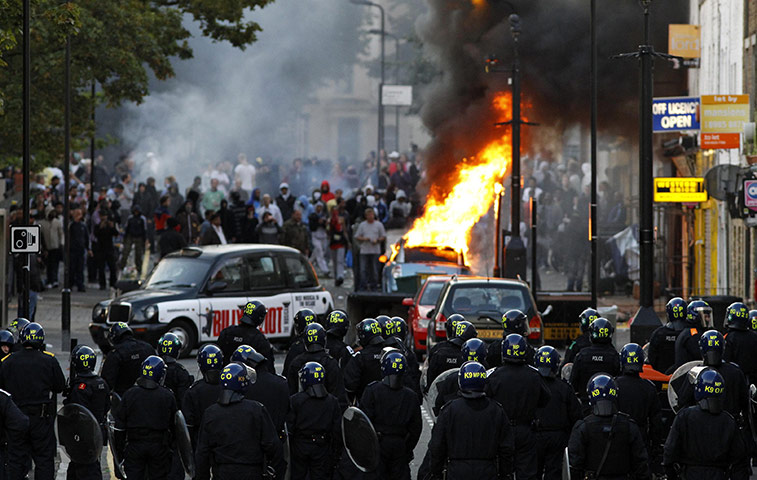 |
| Police officers in riot gear block a road near a burning car in Hackney (Macgregor, 2011) |
Following Arab Spring in 2011, there were many peaceful demonstrations in London. These protest soon turned into riots and violence. I first knew about it when I was reading BBC News. There were many photographs of young men published online were clashing with police. Petrol bombs were intensively used from the rioters’ side, and in contrast police fired teargas canisters. The violence was dominating the scene all over the capital. As a result, many were arrested, injured and many shops were closed and ruined.
According to BBC News (2011) the riots erupted on 6th August over a death of unarmed man who was shot by police, since, the violence commuted to famous cities around England such as Tottenham, Birmingham and Manchester. The incentives beyond the riots appear to be more than shooting unarmed man. Generally, Those who took part in fight with police were almost young men reportedly come from poor communities, and they are unemployed (CBC News, 2011). Penny (cited on the CBC News website, 2011) claimed that "The truth is that very few people know why this is happening."
Authorities reaction to riots was to restore order and peace, and not to allow terror emerges on Britain’s streets. Thus, enormous number of troops intervened to deter rioter from vandalizing public and privet properties. Police arrested many and promised to bring them to justice.
Bibliography
BBC (2011) England riots: Maps and timeline. Available at: http://www.bbc.co.uk/news/uk-14436499 (Accessed: 10 January 2013).
CBC News (2011) Getting to the root of the U.K. riots. Available at: http://www.cbc.ca/news/world/story/2011/08/09/f-uk-riots-faq.html (Accessed: 10 January 2013).
Macgregor, L. (2011) Police officers in riot gear block a road near a burning car in Hackney [Online]. Available at: http://www.guardian.co.uk/uk/gallery/2011/aug/09/london-riots-croydon-hackney#/?picture=377701208&index=16 (Accessed: 10 January 2013).
No comments:
Post a Comment